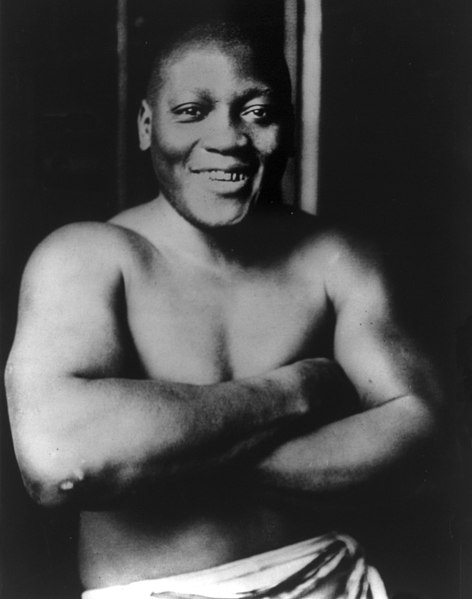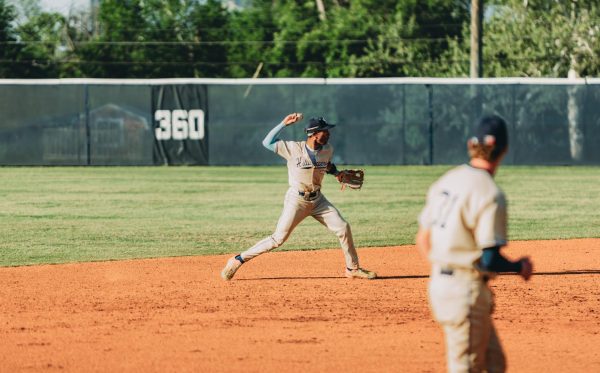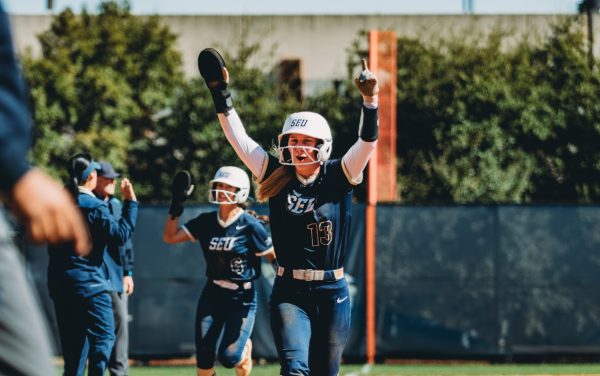The Galveston Giant: Jack Johnson, boxing’s first black heavyweight champion

Johnson is known to have committed one of the fiercest knockouts in boxing. Johnson is also known for his strong defensive tactics.
John Arthur “Jack” Johnson was born in Galveston Texas in 1878. His parents were both former slaves, and he and most of his family lived their lives in abject poverty. As far as we know, Johnson was good in school until he was pulled out to work to help support his parents and eight siblings. At age 16, he left home to forge his own path traveling across America to cities like New York and Boston before returning home. He would begin his boxing career around this time, fighting in matches with prizes of only a few dollars at a time. Growing up at the height of Jim Crow policies in the south, Johnson was made aware that there was a glass ceiling for how high a black man could rise in America, a ceiling which Johnson would later shatter.
One of his first historic fights was against an older white boxer named Joe Choynski in Feb. 1901. Choynski claimed to be coming to Galveston to teach boxing classes, but in reality he had come to fight Johnson. Unlicensed matches like this one were illegal at the time. Johnson lost the match by KO in the third round, but Choynski was still impressed with the young boxer’s display of talent. The two would be arrested by Texas Rangers and spend 23 days in prison together, which Choynski would use to teach Johnson many of the tricks of the trade he had learned over the years, saying to Johnson: “A man who can move like you should never have to take a punch.” This was likely the beginning of Johnson’s signature defensive boxing style.
It is worth noting that the sport of boxing during this time was very different from today, holding in the cliche could go on without penalty, and many of the techniques used today, were either unheard of or only just beginning to be used.
Johnson earned national recognition, but he only prize he truly wanted was the world heavyweight championship. However, the champion Jim F. Jefferies refused to fight Johnson, believing that it was beneath him to fight a black fighter for the title. But, Jefferies would retire and be replaced by Tommy Burns, a canadian who refused to fight Johnson for the same reasons. However, Burns said if Johnson could pay him 30,000 dollars (which was worth a lot more at the time), he would fight. Burns likely thought that Johnson would be unable to come up with the money, but with the help of an Australian promoter he secured the funds.
In Dec. 1908, just outside of Sydney, Australia, the greatest upset in sports in centuries was about to take place, as Johnson entered the ring to fight a white man for the world heavyweight title. The crowd jeered at Johnson, screaming hate and threats at him as he entered the arena. His opponent, Tommy Burns (the current heavyweight champion), openly mocked him shouting every slur under the sun to try to demoralize Johnson, but Johnson smiled back at the hate with his golden teeth and laughing at all of them as he made history.
If you watch the footage of the fight there is no competition. Burns delivers a few blows which do nothing as Johnson holds and pummels Burns, laughing and smiling and mocking him through the fight. In round 14, the police stepped in and stopped the fight and footage, denying the world the ability to see this historic knock out. Regardless, Johnson was declared the heavyweight champion of the world.
The results angered many racist whites in America, not only mad that the belt belonged to a black man, but also that the black man in question lived a lavish life of fine suits, gold rings, fancy clubs, cars and houses, and, worst of all in their mind, openly dated and married white women.
White America now appealed to Jefferies to fight Johnson, calling him “the great white hope.”
Johnson received many death threats, but he paid them no mind. Jefferies finally came out of retirement to fight Johnson in what was known as the fight of the century. The fight was in Reno, Arizona, with a purse of more than a hundred thousand dollars for the victor.
The fight lasted fifteen rounds. The whole time Johnson joked with Jefferies, saying things like “Come on now, Mr. Jeff. Let me see what you got. Do something, man. This is for the championship.” In the fifteenth round Jefferies was knocked down. He got back up and was knocked down again, the white referees picked him back up, and he was knocked down again. This time there was no one stopping the camera, this time the whole world would watch as Johnson, the Galveston Giant, would prove that his fights with Burns and other fighters were not flukes and that he was truly the greatest living boxer of his time.
When news of this fight broke out in America there was an uproar amongst racist whites, hate crimes and lynchings became far more common, and Johnson himself was forced to flee the country after he was charged with a crime for crossing state borders with a white woman. He would go on to defend his title for five more years around the world before being defeated in Havana, Cuba, when he was out of shape and hadn’t fought much in the past year.
He died in a car crash in 1946, but his legacy would be remembered in the sport of boxing, and would go on to inspire many other boxers, like Muhammad Ali. Johnson will always be remembered as a man who stood up to a racist world and fought for the right to be free.






